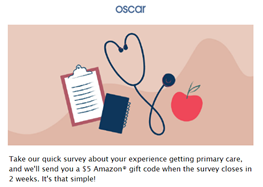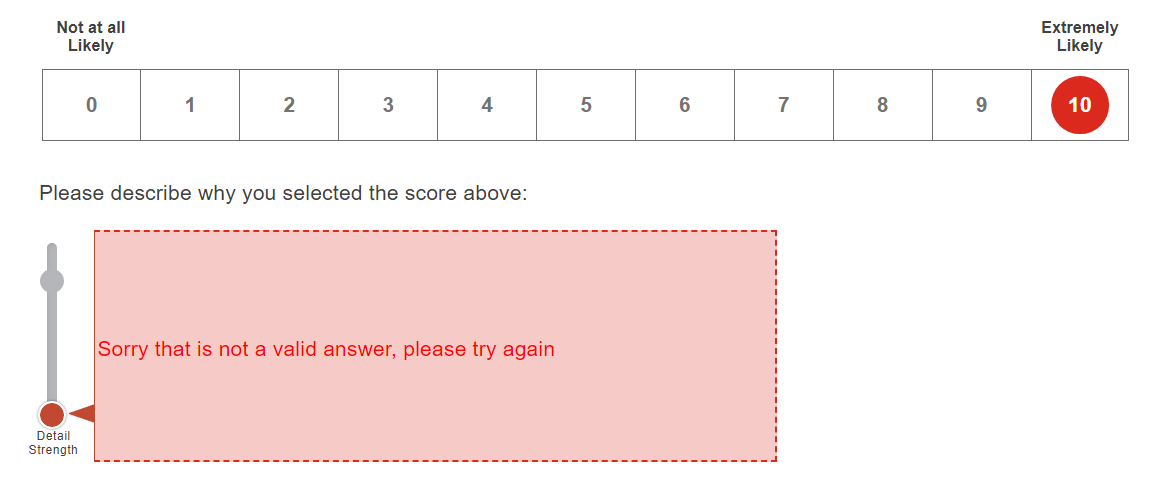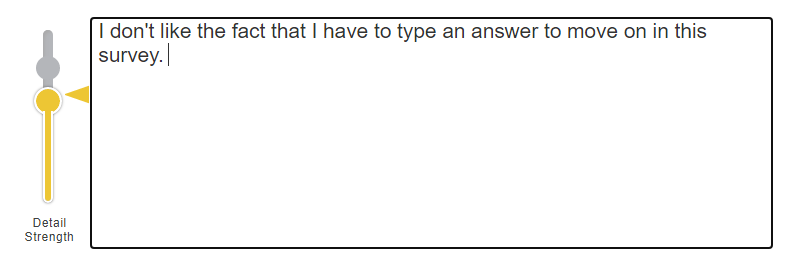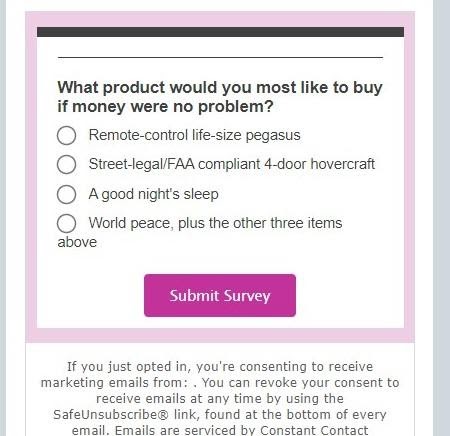Getting customer feedback is the key to delivering more of what your customers want. But how can you get customers to share their experiences when everyone’s inbox, push notifications and texts are full of customer survey requests?
Use these tips to craft surveys your customers will actually want to take—and that will give you information you can actually use to grow your business.
1. Decide what you need to know from your customers
“I want to know what my customers think of my store” is too broad. Focus on specific issues you want to learn more about.
For example, business and technology publisher Quartz recently asked its subscribers, “Would you recommend Quartz membership to a friend? Why or why not? Help us improve by taking this two-minute survey.”
This request makes it clear that the survey has a point – to find out how they can get more referral subscribers – and that it won’t take long.
Be specific, too. For example, if you want to know whether adding new payment methods to your store will increase sales, don’t just ask your customers if they’d like to see more payment options. Include a dropdown or tick-box menu with new payment methods you’re considering or ask your survey takers to type in their favorites.
2. Keep your customer feedback survey short
Marketers, advertisers and scientists have studied the ideal length for a survey and found answers that are all over the place, anywhere from seven minutes (about 12 questions) to 20 minutes (which seems… excessive). The one constant among different studies is that the longer a survey is, the less likely people are to finish it.
The exact number of questions in your survey will depend on what you’re trying to learn, but sticking to 12 or fewer is wise, based on the seven-minute time limit mentioned above. (I’m a fan of 3 or fewer questions, but that’s just me.)
A progress bar can help keep people from dropping out before they finish your survey:
There’s another reason to keep your surveys short: SurveyMonkey found that the more questions your survey has, the less time people spend thinking about their answers. So, the quality of the data you collect is likely to be better if your survey is shorter.
Finally, a too-long survey can make your customers feel like you don’t value their time. Keeping it brief is respectful. So is sweetening the deal.
3. Reward customers for taking your survey
Like everyone who shops online and via apps, I get a lot of customer survey requests. And like everyone, I ignore most of them.
But there are some brands whose surveys I almost always take—the local pizza place that adds rewards points to my account and the insurer that throws a few Amazon bucks my way. I appreciate the fact that they’re willing to acknowledge the value I’m offering when I take their surveys.

If gift cards aren’t in your budget, in-store rewards or discount codes for completed surveys can boost participation.
4. Cut through the survey-request clutter
Make it as easy as possible for people to answer your survey. One of the easiest ways to do this is to embed a one question survey in an email.
Behold ThredUp’s one-question customer-service feedback email survey:

You don’t have to click a link to take the survey, you just enter your star rating. Then you’re taken to the website for a couple of follow-up questions, and then you’re done. But even if you drop out after hitting your star rating, the online retailer has the most important piece of information about your experience.
5. Don’t make your customer survey feel like work or school
Here’s the first question in a post-purchase survey from one of my favorite regional chains. Already, we’re off to a bad start.

Just giving them a 10 out of 10 isn’t enough. I have to explain my rating to earn the privilege of answering more questions. And I’ll be evaluated in real time on the “detail strength” of my answer.

Sharing customer feedback shouldn’t feel like a graded writing assignment. Keep it simple and remove any elements that create stress.
If you follow up customer purchases and email signups with email drip campaigns, you can add surveys to the messages you send at pre-set intervals. Not sure what a drip campaign is? Check out our post on why drip campaigns are awesome and how to build them in Constant Contact.
For a more low-key approach, you can embed a survey link in your email boilerplate, as discount retailer 6pm.com does:

Want more options? Virtue Media partner Constant Contact offers a survey builder tool as part of its paid plans that you can use to embed branded surveys in your emails or on your website.
I tried it out and put together a simple survey in a couple of minutes. You can add your logo, images and custom colors to align your survey with your brand.

Which channels should you use to survey your customers? That depends on how you normally connect with them. For example, if most of your shoppers visit your store on their mobile phones, sending surveys through push notifications or using a Messenger bot will probably get better results than sending surveys via email.
Looking to add customer surveys to your WooCommerce website? Check out our list of the top survey plugins.
7. Use the information your customers share
Collecting customer feedback is a great first step that too many companies don’t take. Don’t stop there, though – more than a third of companies don’t use all the data they have, and less than 1/5 use customer data to create better offers and shopping experiences.
To turn your customer data into actions that improve your store, set up a regular review schedule to see what your customer surveys are telling you. Watch for trends over time – are more customers happy with your online payment options than they were six months ago? Is there more demand for local delivery options?
Finally, when you make a change based on customer surveys, let your customers know about it. You can build a campaign around the new color choices you’ve added, new payment methods in your store or new services customers have requested. Show your customers that you listen by using their feedback and they’ll be more likely to take your surveys—and buy from you—again.




![Yes, B2B Websites Can Use Personalization Too [Here’s How]](https://mdvirtue.com/wp-content/uploads/2022/02/Yes-B2B-Websites-Can-Use-Personalization-Too-Heres-How-400x250.jpeg)

0 Comments